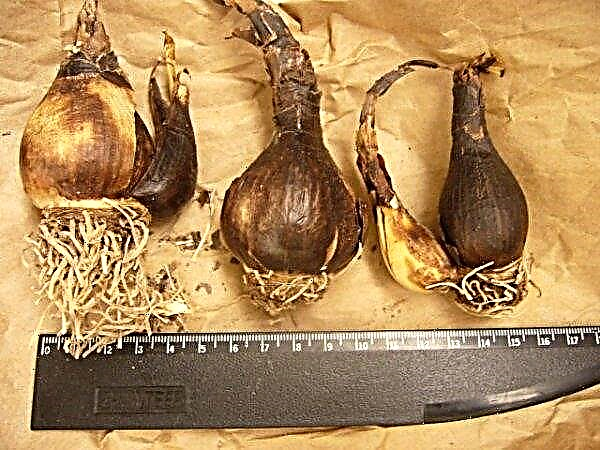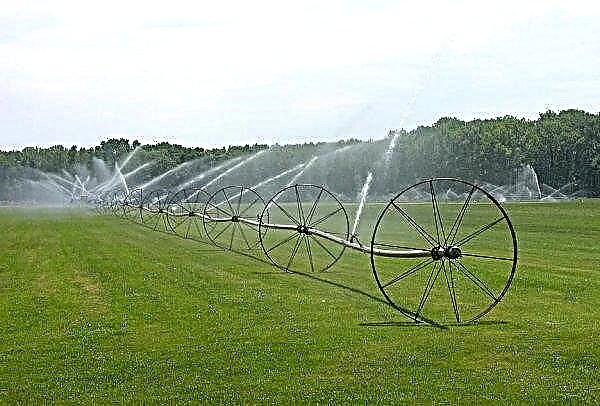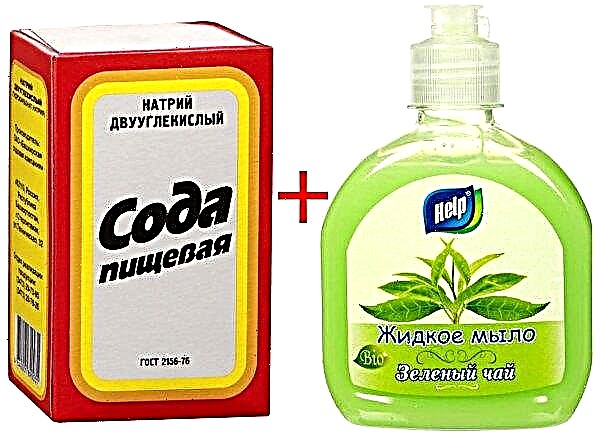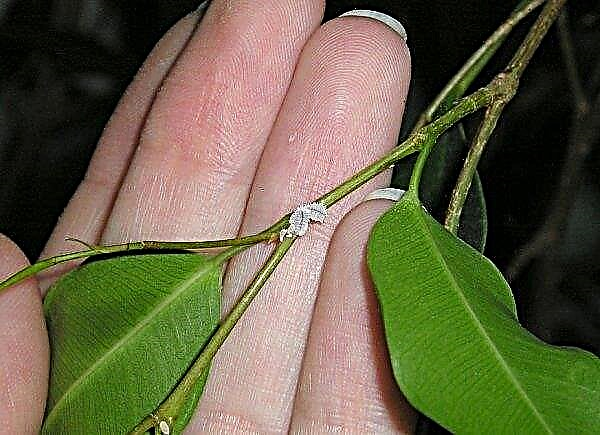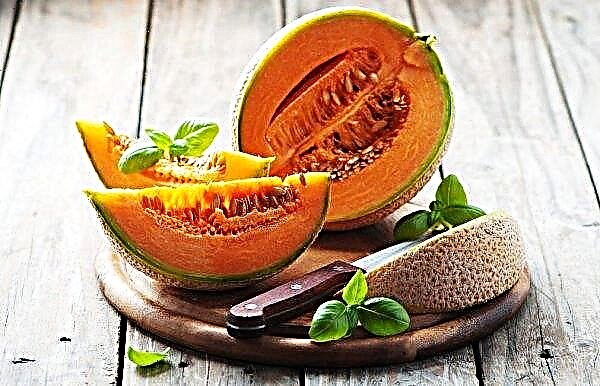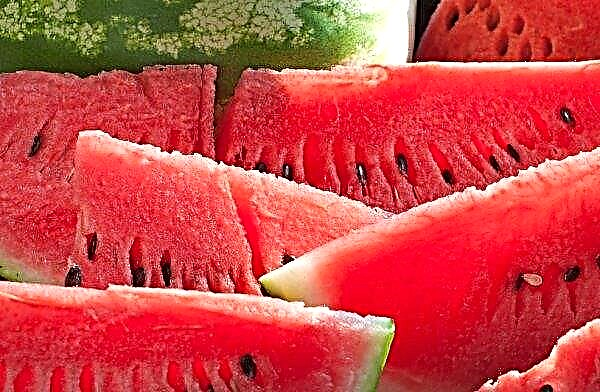In order to achieve better milk yield and maintain the health of the goat, it is launched before lambing. Each goat grower must be able to do it right. The necessary recommendations on how to run a goat are collected in this material.
What does it mean to run a goat?
Launch is the process of temporarily stopping milking by reducing the number of milks and adjusting nutrition. It is needed so that the goat's body retains the necessary valuable substances, and does not give them away with milk. The launch also allows the body to relax and gain strength before lambing and feeding offspring.
Correctly neglected animals after birth give more milk.
Usually goats are covered 2 times a year, which means that it will take 2 launches. Self-starting occurs in low-fat animals, with multiple pregnancy and with a poor diet. But in highly milked females, it may not happen with the participation of humans. Such individuals are milked once a day, and before delivery, preventive measures are taken to prevent the development of postpartum paresis of the hind limbs.
Such individuals are milked once a day, and before delivery, preventive measures are taken to prevent the development of postpartum paresis of the hind limbs.
In general, the success of the launch will depend on the individual characteristics of the goat, its diet, living conditions and productivity.
Important! Breeders noted that if the goat is not started, then with further lactations, the amount of milk decreases by 20-40%.
When to run
It is necessary to start the launch at the 3rd month of pregnancy, spending it for 4 weeks. Since the diet and the number of milking change gradually, at the beginning of the 4th month the animal should already be running.
In winter
In winter, the start of the launch is to adjust the diet - they reduce the amount of succulent feed: beets, carrots, pumpkins, zucchini, cabbage, cereals, and compound feeds. It is these ingredients that affect milk yield. Their reduction should lead to a decrease in daily milk yields.
After milk reduction, a new milking scheme is introduced. So, if an animal is normally milked three times a day at equal intervals, then you need to reduce this amount to 2 times a day. In this case, the interval between them will increase to 12 hours.
During milking, it is necessary to stop all manipulations that affect the increase in the amount of milk: massage, rubbing, affectionate words, etc. You need to stop milking at the moment when the mammary glands become soft and the pressure is weak, even if the udder is not completely emptied.
This will give the body an additional signal about the need to reduce milk production. With the help of such actions, it is necessary to ensure that the goat gives no more than 2 liters of milk per day. As soon as this happened, it is necessary to introduce the so-called torn milking - milking should be done not at regular intervals, but gradually increasing the interval by 1 hour, and at the end go to 1 milking per day.
With the help of such actions, it is necessary to ensure that the goat gives no more than 2 liters of milk per day. As soon as this happened, it is necessary to introduce the so-called torn milking - milking should be done not at regular intervals, but gradually increasing the interval by 1 hour, and at the end go to 1 milking per day.
Next, you need to increase the interval between daily milking by 1 hour. That is: if today milking is carried out at 8 in the morning, tomorrow it must be done at 9, the day after tomorrow at 10, etc.
With proper host behavior, daily milk yield should decrease to 300 ml. With these indicators, you should try not to affect the udder for 2–3 days. However, you should carefully monitor its condition. If it will inflate, it is necessary to make a careful decantation.
Thus, starting from the 4th month, the udder must be left alone and only monitor its condition, prevent stagnation and not provoke the development of mastitis.
Important! If the udder swells 2 weeks before lambing, this is considered the norm and the first sign of an early birth. At this time, a colostrum rises, which will first feed the newborn kids.
If the goat is normally milked 2 times a day, in this case:
- With a decrease in milk yield to 1–1.2 liters after adjusting the nutrition, it is necessary to produce 1 milking per day.
- The next week, milking is done once every 1.5 days. Daily milk yield should be reduced to 600–800 ml.
- In the 3rd week of launch, you need to milk 1 time in 2 days. Milk should be reduced to 300–500 ml
- In the 4th week of launch, the goat is milked only when the udder swells.
Summer
In the summer, it is very difficult to run a goat. This is due to the fact that the goat's diet at this time mainly consists of green pasture and it is impossible to control its amount. You can only reduce the duration of walks - up to 4 hours a day, while ensuring constant availability of hay in the feeder. Especially valuable for animals at this time is hay from legumes. Concentrates in the menu are reduced to a minimum.
Especially valuable for animals at this time is hay from legumes. Concentrates in the menu are reduced to a minimum.
Feeding can be carried out according to this scheme:
- breakfast - meadow and bean hay;
- dinner - herbs in the pasture;
- dinner - hay and straw cutting.
How to run a goat with girl's milk
Not all goats get girl’s milk: discharge from the mammary glands of uncovered females is called such a phrase. Often, the owners notice that the udder, or one side of it, swells in non-pregnant and nullipy goats at any age.
Most often, this phenomenon occurs in goats of dairy breeds during puberty under the influence of hormonal changes.
In this case, with a strong swelling of the udder, experts recommend carefully and gently decanting all the milk to the end. Sometimes one milking is enough to leave the milk completely. Otherwise, it will be necessary to monitor the condition of the udder daily, preventing its swelling.
A reduction in milk production will lead to a correction in the diet towards the reduction of succulent feed and an increase in roughage.
Did you know? During the World Congress of Pediatric Doctors, which was held in Paris in 1906, pediatricians in many countries recognized that goat milk is the best natural substitute for human milk. It is 5 times better absorbed by the human body than the cow, has an antioxidant effect and does not cause allergies.
If the udder is slightly swollen, then no action needs to be taken: after a while it should “burn out”. However, monitoring the condition of such females should be increased - usually they are prone to the development of inflammation of the mammary glands. Most often, with the correct behavior of the owner, the girl’s milk leaves quickly, however, there are times when it can rush over the course of a year and the goat cannot be launched. It is important not to leave the mammary glands unattended, since the absence of milking can lead to stagnation, the formation of seals, clots, mastitis.
Most often, with the correct behavior of the owner, the girl’s milk leaves quickly, however, there are times when it can rush over the course of a year and the goat cannot be launched. It is important not to leave the mammary glands unattended, since the absence of milking can lead to stagnation, the formation of seals, clots, mastitis.
How to run a goat if there was mastitis
If mastitis is detected in a goat during pregnancy, then it cannot be started. It is necessary to make a complete treatment for inflammation of the mammary glands. The cessation of lactation, when pathogenic bacteria are in the body, will lead to their substantial growth and worsening of the condition of the animal.
If mastitis is not treated before childbirth, then after lambing it will manifest itself in an acute form, because of which the goat will not be able to feed the children, and its milk will not be suitable for food.
Treatment of mastitis during pregnancy is done by intramuscular injection:
- Cefazolin - twice a day for 7 days;
- Immunofana - 1 time per day for 3 days in a row.
With severe inflammation, once after evening milking, a mastitis forte antibiotic is injected into each lobe. After antibiotic therapy, milking does not stop for another 7 days. This is necessary to completely remove the drug from the body. If the treatment was successful before 3 to 4 months of pregnancy, then the launch is performed as usual. On the last day of launch, you can enter in each share the drug Difumast, Nafpenzal or Orbenin. After this, milking is no longer performed.
If the treatment was successful before 3 to 4 months of pregnancy, then the launch is performed as usual. On the last day of launch, you can enter in each share the drug Difumast, Nafpenzal or Orbenin. After this, milking is no longer performed.
If a month remains before the birth, then the goat can no longer be launched. Before lambing, they simply milk it once a day.
Rules for feeding at launch
During the run, the goat should have constant access to hay.
In the daily menu at the first start-up you need to enter:
- 400 g of hay cereals;
- 400 g of hay legumes;
- 300 g of straw from barley;
- 1,5–2 kg of corn silage;
- 200 g of cereals (oats, barley);
- 200 g of sunflower meal
In the future, it will be necessary to reduce the amount of grain and meal.
In order for the goat to receive a sufficient amount of vitamins and minerals, special additives can be introduced, for example, Felucen, Zink and others.
Goat is watered twice a day, at a specific time. If at normal times the animal needs to drink 2–4 liters of warm water for every kilogram of dry food, then during the launch period the volumes are reduced by about 2 times. If the amount of milk does not decrease, then they give even less liquid, limiting its volume to 2 liters per day. Swallow during this period the animal is not offered at all.
If the amount of milk does not decrease, then they give even less liquid, limiting its volume to 2 liters per day. Swallow during this period the animal is not offered at all.
Important! During pregnancy, it is necessary to ensure that stale ingredients affected by fungus or mold do not get into the feeder. Such products can cause premature termination of pregnancy.
10 days after a successful launch, the goat will need to gradually return to its usual diet, slightly reducing the former amount of succulent feed.
Recommendations for feeding goats after launch:
| Pregnancy period | Feed | Amount kg |
| 4th month | hay | 1,5 |
| barley | 0,25 | |
| carrots (pumpkins) | 1,5 (0,5) | |
| carbohydrate paste (molasses) | 0,2 | |
| iodized salt | 12 g | |
| 5th month | hay | 1,5 |
| barley | 0,5 | |
| carrots (pumpkin) | 2 (1) | |
| carbohydrate paste (molasses) | 0,3 | |
| iodized salt | 12 g |
For 7–10 days before birth, the amount of concentrated feed is reduced by 2 times, and their minimum is given immediately before lambing. Green food and vegetables are completely removed from the menu. Food before childbirth should be low-calorie. Thus, the launch of a goat is a necessary condition for maintaining the health and strength of the animal before lambing and obtaining high milk yield after it. It involves adjusting the diet to reduce juicy and increase roughage, as well as a gradual reduction in milking.
Thus, the launch of a goat is a necessary condition for maintaining the health and strength of the animal before lambing and obtaining high milk yield after it. It involves adjusting the diet to reduce juicy and increase roughage, as well as a gradual reduction in milking.
Did you know? The most expensive goat in the world was sold in 1995 for $ 5,300. This was a representative of the highly productive Saanen breed.
It is noted that properly running animals give birth to a full and healthy offspring, get sick less and give more milk.



